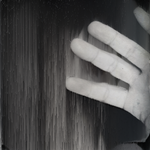Copy link to clipboard
Copied
When I nest footage, the nest seems to treat the footage like a screenshot of the footage rather than using the original footage itself. I.E. if I make a 1080 video from 4k footage and use that extra resolution for zooming and cropping in post, when I nest footage that extra resolution disappears. Here is a screenshot, both are from a high-resolution image when fit to screen, and then zoomed in to %100. On the left side is when done from the timeline directly, the image on the right side is nested and the nested footage was then zoomed in. Clearly, there is loss on the right side. Is there a way (like a "scale from source material") option for nested footage?
I need to "zoom the nest" because when I work with chroma key footage moving and zooming the layers independently is a nightmare trying to maintain the correct posisions and zoom levels relative to each other. Especially if the background is a different aspect ratio than the top layer. So yes I know that I can double click on a nest and work the pieces inside, but not moving the pieces individually is exactly why I nested them in the first place. I am looking for a way to scale from the source material automatically when zooming in on a nested sequence rather than, what seems like, bicubic upscaling from whatever is on the screen as a result of each nested frame. If there is a different better tool to use than nesting all together please point me there. It is just a trick someone pointed out to me as an easier workaround.
Thanks!
 2 Correct answers
2 Correct answers
You need to zoom in on the source clip, not the nested clip. Nesting really is adding another window through which you look at the source material. Enlarge the window and you start to see zooming aretefacts.
Open up the nested sequence, change zoom there, even if you need to make a variable zoom in combination with a position change.
Look at the result in the destination sequence.
Hope this helps.
Nesting rasterizes the image to 100% of the sequence settings.
Zoom before nesting.
Copy link to clipboard
Copied
Sorry forgot the screen shot!
Copy link to clipboard
Copied
Adobe Staff? anyone?
Copy link to clipboard
Copied
You need to zoom in on the source clip, not the nested clip. Nesting really is adding another window through which you look at the source material. Enlarge the window and you start to see zooming aretefacts.
Open up the nested sequence, change zoom there, even if you need to make a variable zoom in combination with a position change.
Look at the result in the destination sequence.
Hope this helps.
Copy link to clipboard
Copied
Nesting rasterizes the image to 100% of the sequence settings.
Zoom before nesting.
Copy link to clipboard
Copied
Yes this is correct but I also was wandering it something like after effects had been implemented in the latest release.
If you are working to a screen replacement in the master clip and then you want to zoom in the entire image (the one that contains the replaced clip) you would simply zoom in the nested clip rather then zooming on the replacement and finding the correct zoom for the original clip. Of course I'm talking about having a gradual zoom in which you perceive the action of the zooming operation.
I will try to add a feature request on the prerelease website but I don't know if that still works.
Best!
Davide
Copy link to clipboard
Copied
+1 for a feature to have nested footage work off the original resolution of footage nested rather then rastarized to timeline version. Seems like there should be no reason this could not be implimented, but I could be wrong.
Copy link to clipboard
Copied
Why not using a Adjust. Layer, with a transform effect, to zoom in it (inside the nested sequence).


